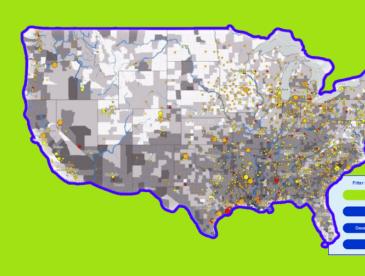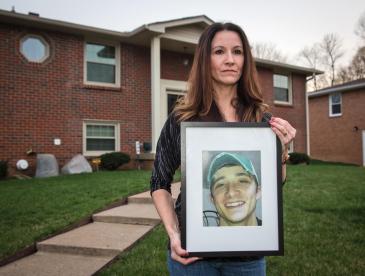
Moving from toxic chemicals to safer alternatives
The problem: Millions of people are exposed to harmful chemicals in food, personal care products and other consumer goods — many of which are made using fossil fuels. People who live or work near chemical facilities are also at much higher risk of illness or death, and 6-10 million U.S. households get their drinking water through toxic lead pipes.
What we’re doing about it: We’re working with communities, scientists, governments and industry to reduce the risks from toxic chemicals by changing how manufacturers make and use them and moving toward the safest possible alternatives. Our goal is to drive demand for safer products and ensure access to safer drinking water by replacing lead pipes.
Our work reducing people’s risk from toxic chemicals
- Project
EDF identifies top 10 U.S. cities with the most lead pipes
- Initiative
Reducing harmful chemicals in our food
- Blog post
Unveiling EDF’s Chemical Exposure Action Map
- Article
Families celebrate EPA ban on killer paint stripper chemical
- Expert Voices
Q&A: Former EPA chemicals expert says agency cuts leave public vulnerable
- Blog
Read the latest updates from our experts on the EDF Health blog
Updates
Read the latest articles, blogs and press releases on safer chemicals.
-
COMING SOON: An effort to weaken our popular chemical safety law
Background, -
Trump EPA Proposal Lowballs Risk of Cancer-causing Formaldehyde
Press release, -
New analysis identifies 25 cancer-causing substances allowed in U.S. food
Blog post, -
New Poll: Republicans, Democrats and Independents Strongly Oppose Weakening Chemical Safety Law
Press release, -
Community, Health and Environmental Groups Sue to Stop President Trump’s Unlawful Toxic Air Pollution Exemptions
Press release, -
Trump EPA Political Appointees Scrambled to Offer Free Pass to Pollute
Press release,
Safer chemicals resources
Dig deeper into our work with these resources for researchers, policymakers, journalists and communities.
- Explainer
Broken GRAS: How the FDA lets unsafe ingredients into our food
- Interactive tool
Chemical Exposure Action Map
- Article
Harmful “forever chemicals” are in drinking water: What you need to know about PFAS
- Initiative
Lead pipes: A threat to kids across the U.S.
- Solutions
Cumulative risk assessment framework
- Article
Give your newborn a healthy start with this guide to getting toxics out of your home
Our chemical safety experts
Partner perspective
EDF uses its scientific expertise to expose critical flaws in America’s chemicals policy.
Beth Jordan, M.D.
Medical director, Association of Reproductive Health Professionals
Media contact
Cecile Brown
(202) 271-6534 (office)






















